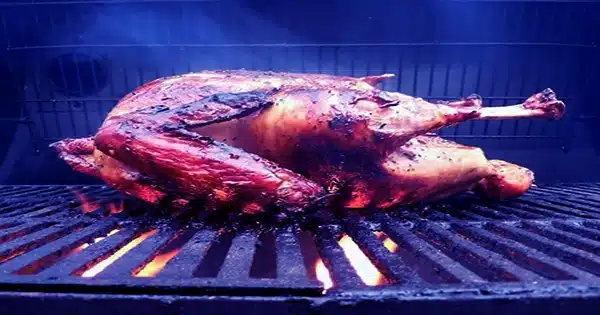Smoking meat has witnessed a meteoric rise in popularity in recent years. Electric smokers have taken some of the uncertainty out of cooking, especially for people who want to dabble but don’t have time to manage the fire all day. Aside from having the correct tools, wood selection is critical in attaining the delectable flavors and fragrances of smoked meats. But, with so many options, it’s easy to get lost in a fog of smoke. So we’re breaking down some of the most popular smoking woods and discussing which wood is best for smoking turkey, beef, hog, and other meats. In addition, we addressed some popular beliefs to help you reach BBQ mastery.
How to Choose a Wood: A curious chemical change occurs when smoke hits meat. The smoke’s complex chemicals mix with the proteins and fats in the meat, resulting in the formation of new savory and sweet molecules that improve the taste and texture of the meat. While there is considerable leeway, utilizing the wrong wood might result in unfavorable chemical interactions, resulting in excessive bitterness or lackluster flavors. Knowing the properties of each type of wood allows us to better understand how it pairs.
Mesquite: Mesquite is popular in Texas barbecue because of its robust, bold flavor. It’s great with beef and other hearty foods but use it sparingly because it can be overpowering.
Hickory: Hickory is the traditional wood for smoking meat. Its sweet, umami flavors pair nicely with pig ribs, shoulders, and hams.
Oak: Oak has a medium smokiness that works well with a variety of meats. It’s fantastic for almost everything, but it really shines with beef and game meats.
Applewood: Applewood is a great choice for smoking poultry or pork. It adds a subtle sweetness and a light smokiness to chicken, turkey, and pork chops.
Cherry: Cherry wood has a mellow, fruity flavor that complements chicken and pork, making it an excellent choice for smoked ham or duck.
Pecan: Pecan wood has a sweet, nutty flavor with a light smokiness to it. It’s a great choice for both poultry and beef, making it a versatile option to keep on hand.
Maple: Maple wood lends a delicate, slightly sweet flavor to smoked foods. It’s great for lighter meats like chicken and turkey, and it also works with veggies.
Leave these three myths at the door.
While choosing the appropriate wood is important, there are other disadvantages to smoking meat. These three beliefs, if ignored, might lead to a less-than-ideal smoking experience.
Myth 1: Any size of wood will suffice
One popular fallacy is that the type of wood used for smoking, whether chunks, pellets, or chips, makes no difference in the end result. However, each type of wood has unique qualities. Chunks are great for long-term smoking, while pellets are convenient and produce strong bursts of taste. Your selection can have a big impact on the flavor, duration, and ease of your smoking experience. However, for the majority of ordinary smoker applications, chips are the most versatile and forgiving option.
Myth No. 2: Soak Wood Before Use
Most guidelines recommend soaking wood, particularly chips, in water before using it in your smoker to speed up the smoking process. However, this technique can be detrimental. When wood chips are saturated, they must first dry out before smoldering and producing smoke. This delay not only makes maintaining a regular smoking temperature difficult but also results in uneven and unpredictable smoke generation. Dry wood chips, on the other hand, burn more easily and provide a consistent, reliable stream of smoke, which improves and streamlines the entire process. Skip the soaking process the next time you prepare to smoke your favorite meat for more consistent and efficient results.
Myth 3: More smoke equals better flavor
When it comes to smoking meats, there’s a common fallacy that more wood equals more flavor. However, too much smoke, often known as “over-smoking,” can overwhelm your meat, leaving it with a harsh and bitter flavor. A competent cook achieves a precise balance of smoke and protein, allowing the natural flavors of the meat to show. It’s critical to smoke in moderation; less can frequently result in a more satisfying and well-rounded experience.
















